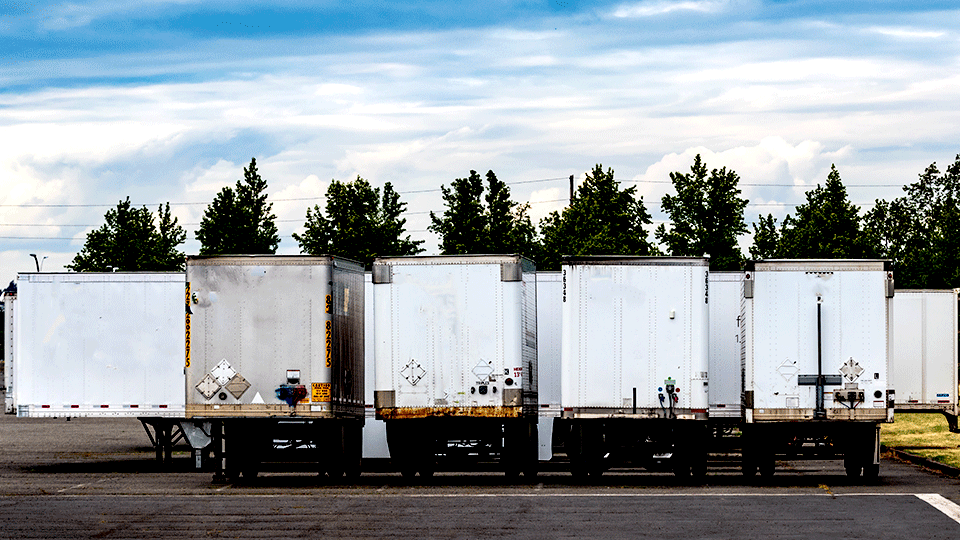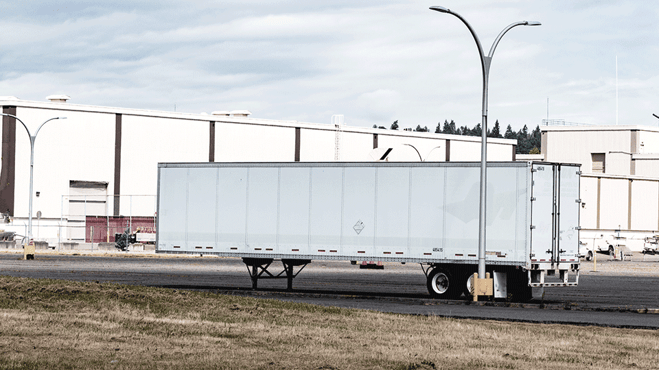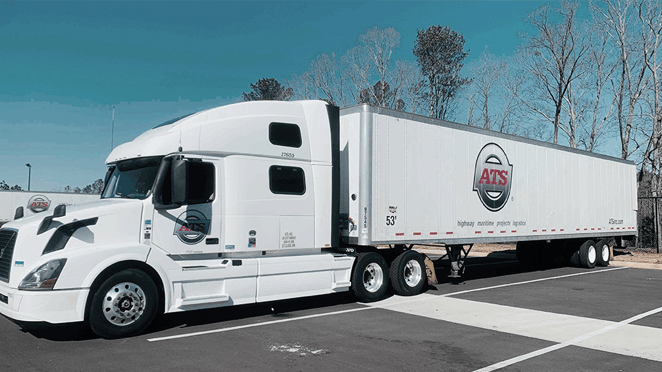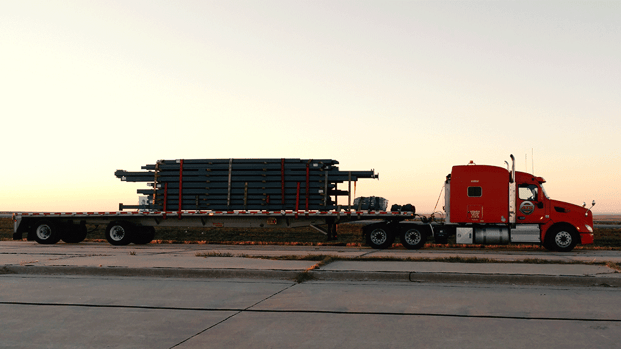
As a logistics professional, your sights are constantly set on efficiency, set on optimizing your processes to assist your company toward brighter days.
The transportation industry, however, rarely makes this easy on people in your position; there are simply too many variables to account for, too many things that could go wrong.
Recently, in pursuit of the lofty goals you’ve set for your company and commitments made to customers, you’ve wondered whether starting a drop trailer transportation program would make sense.
These services seem to be really effective when run correctly. And, with a supply chain as fast-paced as yours, utilizing one could make a real difference.
But you’re hesitant.
Up to this point, it’s been difficult to discern whether a drop trailer program would fit your needs and, more importantly, information on how to facilitate one successfully hasn’t been accessible.
You need this knowledge in order to make the best-possible logistics decisions for your company, so let’s talk about it.
Here at Anderson Trucking Service (ATS), we’ve participated in countless drop trailer programs over the last 65 years. In many instances, we’ve seen drop trailers make a positive impact on the supply chains of shippers across industries — from manufacturing to retail.
In this article, you’ll learn about four key signs that a drop trailer program could be a fit for your business and three ways to make yours as successful as possible.
⏬ Listen to The Podcast on This Topic ⏬
What is a Drop Trailer Program?
A drop trailer program is a pre-arranged transportation service whereby a trucking company leaves a set number of trailers in their customer’s (a shipper’s) possession. These trailers, which are picked up in accordance with the shipper’s needs, coupled with the “turn rate” expected by their carrier, are loaded in the interim period between drop-off and retrieval.
When managed correctly, each loaded trailer leaving a shipper’s yard is replaced by an empty one, allowing these businesses to operate at maximum efficiency.
Drop trailer programs can be a highly convenient — and mutually beneficial — transportation solution for businesses that utilize both open-deck and dry van trailer types.
When Does a Drop Trailer Program Make Sense?
Providing drop trailer transportation services helps trucking companies ensure that each of their assets is properly utilized. These companies, with a revenue structure necessitating the continued “rental” of their trucks and trailers, commonly stick to a set truck to trailer ratio.
Although it varies from one carrier to the next, a two or three-to-one ratio is not uncommon. And, since truck drivers can only pull one trailer at a time — and trailers only make their company money while under a load — drop trailer programs can make a lot of sense in the right situation.
But when does contractually, entering into a drop trailer program (long-term or otherwise) make sense for a shipper like you?
The four largest indicators that it might be time to start a drop trailer program, in no particular order, are:
- When you consistently move a high volume of freight.
- If your loading processes reliably take a long time (2 hours or more).
- When your pick-up times don’t need to be exact.
- If you frequently pay more for short-mile weekend capacity.
#1: When You Consistently Move a High Volume of Freight
Although this may apply primarily to larger companies, drop trailer programs can provide a massive competitive advantage to high-volume shippers. For your reference, the term high-volume here refers to businesses that move greater than, or equal to, 10 shipments per week.
When a facility turns through this many trailers every week — and sometimes more than a few per day — it’s important to be on the ball. Consistent volumes of freight movement can mean many things for a company; more customers, heightened production and more moving pieces — to name a few.
That said, high-volume shippers can sometimes run into problems securing the transportation capacity they need in a timely manner, keeping production flowing when trucks show up and loading trailers efficiently.
To solve these and similar issues, with high concentrations of freight to move, larger businesses decide to utilize drop trailer programs. With their help, high-volume shippers can stick to their timelines, avoid the delays that accompany live-loading and stick to the commitments they’ve made customers.
If this struggle sounds familiar, or you move consistent volumes of freight every week, drop trailer shipping may be a great next step for your company.
#2: If Your Loading Processes Reliably Take a Long Time
This and the previous point, often go hand in hand. You see, many of the businesses that enjoy the load-time flexibility offered by drop trailers also move a high concentration of goods — either seasonally or consistently.
Drop trailer programs give companies the ability to transition away from live-loading procedures — where a truck shows up and is immediately loaded — which may leave them paying fees after two hours. Instead, a dropped trailer is possessed by that shipper for a set period of time (typically no more than a few days) allowing them to load at their convenience.
Some businesses may even opt to work loading into their production practices, moving products straight onto a designated trailer when completed.
This helps these shippers maximize their working hours by keeping production flowing and deliveries made.
As such, if you consistently find your loading crews struggling to keep trailers loaded and moving when they show up to an appointment, consider adding drop trailers to your supply chain.
#3: When Your Pick-Up Times Don’t Need to Be Exact
Some products, like raw produce and ice cream, need to be picked up on time every time. The perishable nature of these goods warrants accurate pick-up performance and detailed planning on part of the shipper, consignee and carrier.
That said, the integrity and quality of hard goods — like retail or manufacturing freight — isn’t harmed by holding them within a trailer for an hour or day. These are the kinds of shipments drop trailer programs can be used on.
As a business, you have goals and so do your consignees. However, holding to rigid pick-up appointment times — like 9 a.m. on a Tuesday, for example — can negatively impact your bottom line as freight becomes less attractive to truck drivers.
A truck driver’s hours of service (HOS) — the 14 straight hours of on-duty time they're given within a 24 hour period — are the only opportunity these workers have to make money. And, the more difficult a shipper’s requirements make it for a driver to maximize their HOS, the less likely they are to find a competitively-priced solution.
Companies that utilize drop trailer programs stress the importance of on-time deliveries over rigid on-time pick-ups. In turn, this helps drivers make the most of their limited hours of service as they plan out their shipments in accordance with a flexible dropped-trailer pick-up.
And, although a driver might not show up at exactly 9 a.m. on Tuesday, the delivery will still be made, on time and — most importantly — at potential cost savings.
As such, should you feel capable of giving trucking companies and their drivers a bit of leeway on pick-up times, you’ll like the advantages of adding drop trailers to your supply chain.
#4: If You Frequently Pay More For Short-Mile Weekend Shipments
Your bottom line matters. Not only to the success of your transportation supply chain but to your overall business health. Sometimes, though, in an industry that has experienced unprecedented volatility in recent history, this can feel easier said than done.
Short mile weekend shipping is a consistent challenge companies face no matter their industry. These loads — loads of 350 miles or less — are terrible for a driver's clock (often forcing them to sit on a load over the weekend). In turn, this makes finding a solution for them difficult and costly.
If you’ve ever felt the impact of these loads in the form of increased rates and slim options to choose from, drop trailers might help you substantially.
Instead of forcing truck drivers to pick up your freight on a Friday and sit on it near its destination until Monday — all the while watching the HOS drain away — drop trailer programs present another option.

When handled correctly — and provided you have a way to grant drivers 24/7 access to your yard — using drop trailers on these loads can save you a ton of headaches and money over time.
A trucking company that knows it can send a driver into your facility on Sunday, hook up to the appropriate trailer and get it to your destination by its Monday deadline, is a trucking company willing to serve.
Remember, the more appealing you can make your freight in the eyes of drivers, the better off you’ll be.
3 Ways to Ensure Your Drop Trailer Shipping is Successful
Ok. Now that you know four of the most common indicators that beginning a drop trailer program might be right for your business and have a grasp on why a company would do so, let’s talk about how you can get the most from your program — should you decide to adopt one.
Even though the list of things you can do to get the most from a transportation supply chain is long, for the purpose of this article, here are three things that will impact your drop trailer success most:
- Select great transportation companies.
- Keep your trailer turn rate consistent.
- Consistently update your provider(s).
#1: Select Great Transportation Companies
Starting a drop trailer program is easy. All you need to do is signify your interest to a transportation company you trust and work together to determine whether your needs align with theirs.
Pretty simple right?
Actually, this process gets a bit more complicated if the company you work with doesn’t have the ability to meet their commitments. You see, with more than 700,000 asset-based trucking companies to choose from, it can be easy for shippers to put their trust in an unreliable company.
For a drop trailer program to be successful, however, will require a carrier to dedicate a significant portion of their assets to your supply chain at all times, restricting them from utilizing these assets elsewhere.
That said if a carrier doesn’t have this ability and can’t continually drop off fresh trailers while picking up full ones, your drop trailer program could be dead in the water before it starts.
For this reason, be sure to thoroughly vet each potential drop-trailer provider by asking them questions like:
- How many trailers, realistically, can you dedicate to my business each week?
- What is your history of offering drop trailers in my area?
- Do you have the infrastructure in place to meet my demands on asset equipment only?
The last thing you want to do is hand your cargo off to a provider without the resources to follow through for you — an experience that may sour your company toward utilizing drop trailers in the future.
#2: Keep Your Trailer Turn-Rate Consistent

The turn rate of your dropped trailers, or the frequency with which a loaded trailer is replaced with a new one, can make or break the success of your program.
Without churning out loaded trailers with high enough frequency, shippers may find themselves without a carrier willing to give them access to this service.
Due to the heightened cost structure trucking companies need to deal with, the utilization of their trailers — often coined “utilization percentage” — is incredibly important. And, if you’re not efficiently using their trailers by having them loaded and moving consistently, they may look to dedicate assets elsewhere instead.
In most cases, carriers expect their drop trailer customers to turn trailers no less than once per week (per trailer). As such, before you start your own program, make sure that your freight volume and capacity demands make this possible.
#3 Consistently Update Your Provider(s)
Successful drop trailer shipping, especially for high-volume companies, is dependent on clear, consistent communication. Your transportation company needs to know that you’re getting good use from their trailers and when each load will be ready for transit.
Giving them this information will land on your shoulders, however.
This is typically done by performing frequent yard checks (usually daily) to verify the status of each trailer; which are loaded, which are ready to load and which can be picked up.
Cataloging and sending this information over to your carrier — via email or otherwise — will ensure you’re on the same page.
Using the information they receive — information they can’t get without your input — your carrier can plan out their trucks in accordance with your pick-up needs.
But, What Are The Pros and Cons of Drop Trailer Shipping?
Now you have some tactics for deciding whether your business would fit the drop trailer shipping mold, and three keys to running your program successfully, you’re almost ready to make a decision.
Before you do, however, it’s important that you understand the true advantages and disadvantages of drop trailer freight shipping.
Only with this information, meant to set your expectations, can you make the best decision for your needs.
Check out the following articles and round out your knowledge on drop trailer transportation:
| The Advantages of Using Drop Trailers | The Disadvantages of Using Drop Trailers |
Finally, ATS is proud to offer both open-deck and dry van drop trailer services when it makes sense for our customers. If you have any questions about how our program works or want to get started, please don’t hesitate to reach out today.





